Discover the Best Board Games for Every Player
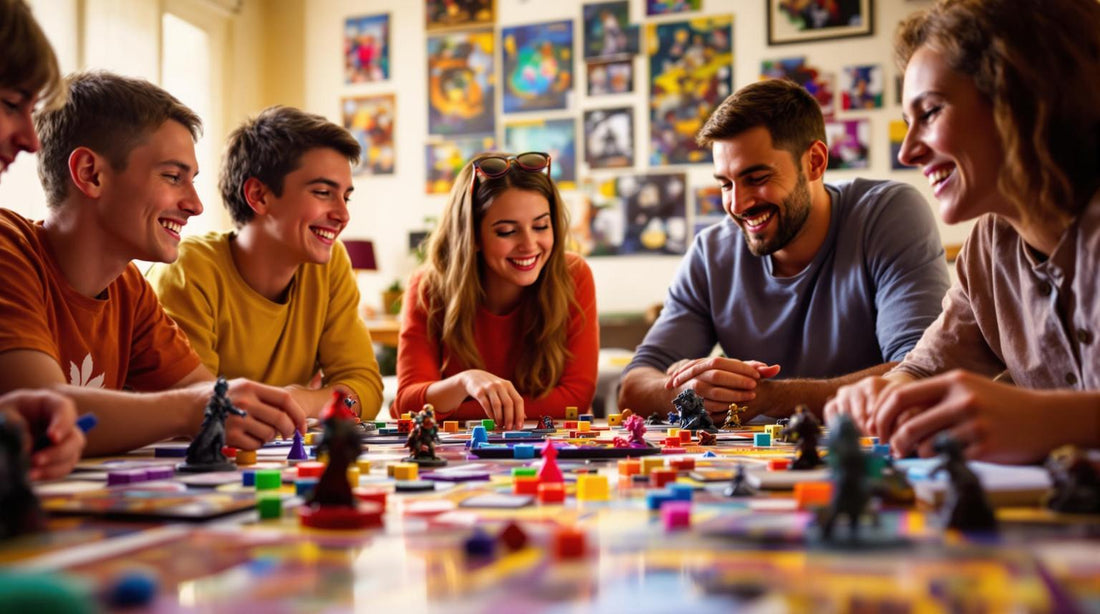
10 Board Games for Preteens to Build Critical Thinking
Looking for a fun way to boost your preteen’s critical thinking skills? Board games can help! They combine fun with learning, encouraging skills like problem-solving, strategic planning, and teamwork - all without screens.
Here are 10 board games that are perfect for kids aged 9-12 to develop critical thinking:
- Settlers of Catan: Junior – Teaches resource management and strategic planning in a pirate-themed adventure.
- Blokus – Enhances spatial reasoning and strategy with simple, Tetris-like gameplay.
- Pandemic: The Cure – A cooperative dice game that builds decision-making and teamwork skills.
- Qwirkle – Strengthens pattern recognition and planning in a colorful tile-laying game.
- Ticket to Ride: First Journey – Combines geography learning with route-planning and problem-solving.
- Forbidden Island – A cooperative game that challenges players to work together to save treasures before the island sinks.
- Kingdomino – Develops spatial reasoning and math skills through strategic kingdom-building.
- Labyrinth – Encourages problem-solving and adaptability in a shifting maze game.
- Clue: Junior – Builds deductive reasoning through fun, kid-friendly mysteries.
- Santorini – Combines 3D building with tactical decision-making for a quick, engaging challenge.
Why These Games Work:
- Cognitive Skills: Boost memory, problem-solving, and decision-making.
- Social Interaction: Improve teamwork, patience, and communication.
- Fun and Learning: Keep kids entertained while teaching valuable life skills.
Quick tip: Get your preteen involved in picking a game - they’ll learn to think critically about what they enjoy while having a say in the fun!
Ready to dive in? Keep reading for detailed insights into each game and how they help kids grow.
Top 10 Best Board Games for Older Children
Board Games and Critical Thinking
Board games create an engaging way for preteens to sharpen their critical thinking skills. Unlike passive forms of entertainment, these games actively involve kids in solving problems, which boosts their mental abilities. This hands-on engagement naturally encourages the development of key cognitive skills.
Strategy-based board games are particularly effective at improving skills like problem-solving, strategic planning, pattern recognition, decision-making, and spatial reasoning.
Take Settlers of Catan, for example. Players manage resources, negotiate with others, and plan their moves ahead. These activities engage multiple areas of the brain, helping to build stronger neural pathways. This kind of mental workout is common in many strategy games.
Because the games are fun, kids learn without even realizing it. Experts point out that board games also help children develop focus and patience, as they require players to take turns, think through strategies, and adapt to changing conditions.
Additionally, board games encourage face-to-face interactions, which promote real-time problem-solving, instant feedback from other players, and social learning through teamwork. Many strategy games also support brain development while reinforcing essential skills like reading and math.
Choosing the right game for a preteen's age and skill level is key. Games that are too easy won't challenge them enough, while overly complicated ones can lead to frustration.
How to Pick the Right Games
Finding the perfect board game for preteens means selecting something that’s fun, engaging, and helps them sharpen their critical thinking skills.
Age-Appropriate Difficulty
Look for games with straightforward rules and enough depth to keep them interested. Steer clear of games with overly complicated setups that might frustrate them.
Educational Value
Pick games that teach without feeling like schoolwork. Kids aged 9-12 are at a key stage for developing their minds. Beyond the learning aspect, think about what will keep them hooked. Ask yourself: Does this game balance fun and learning effectively?
Engagement Factors
When deciding on a game, consider these elements:
- Replayability: Does the game offer different setups or strategies to keep it fresh?
- Social Interaction: Does it encourage positive connections between players?
- Learning Curve: Can players build on their strategies over time?
- Fun Factor: Does the theme and gameplay match your child’s interests?
Make Choosing a Game a Team Effort
Get your preteen involved in the decision-making process. Let them check out reviews, watch gameplay videos, and share their thoughts. If possible, try out the game before purchasing. Websites like Brain Games provide detailed reviews and videos to help make an informed choice. By involving them, you’re not just picking a game - they’re learning to think critically about what they enjoy.
Finally, try to connect the game’s mechanics to real-world skills. For example, if your child loves science, look for games that involve problem-solving similar to scientific experiments. The best games reward both effort and strategy, helping kids grow their critical thinking and emotional intelligence at the same time.
1. Settlers of Catan: Junior
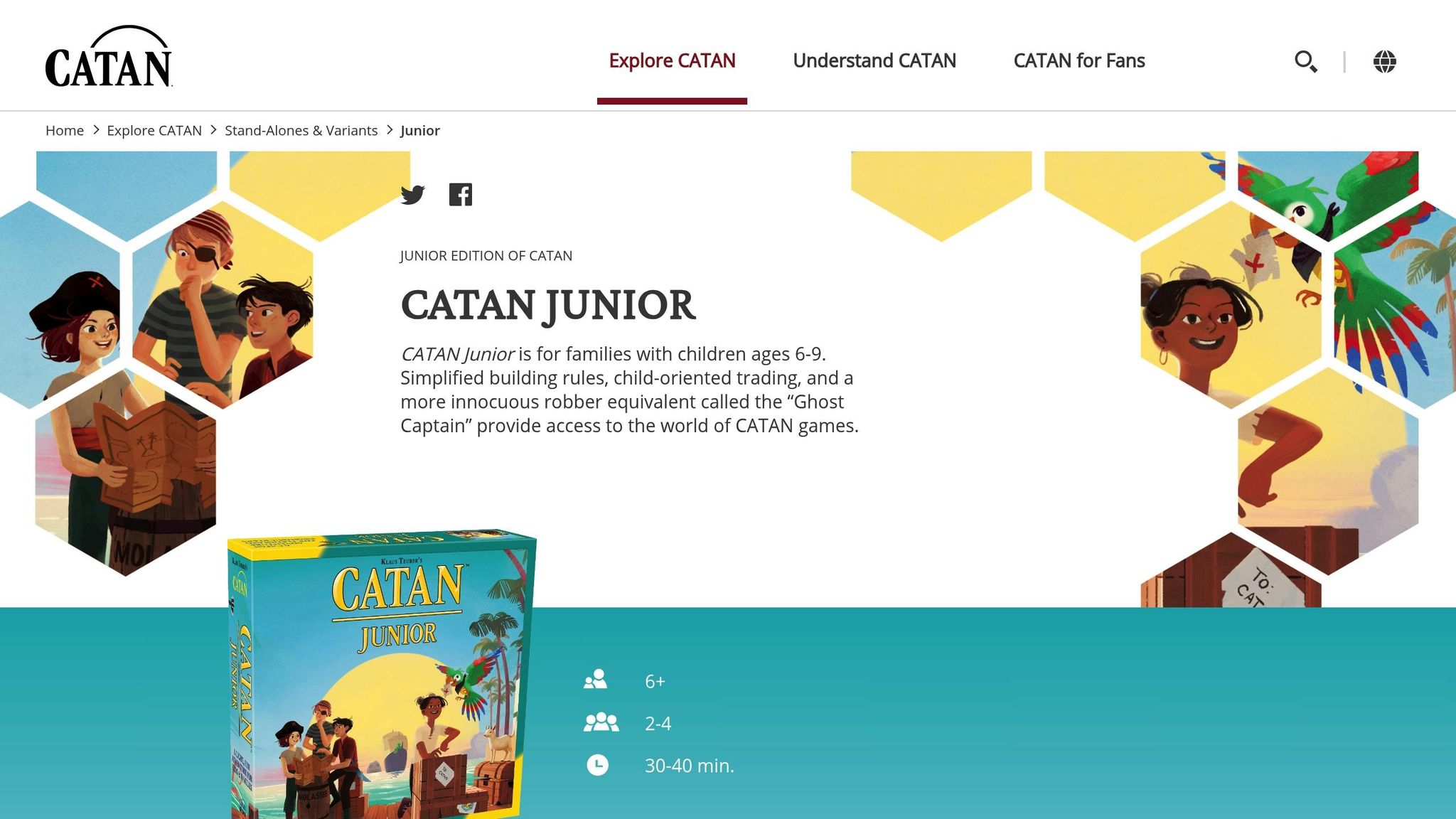
Settlers of Catan: Junior brings the popular strategy game to a younger audience, targeting kids aged 6–9. Instead of settlers, players take on the role of pirates, making it more engaging for children. The game simplifies resource management by using visible cardboard tiles, which help kids easily track and plan their moves. Players gather resources like wood, goats, gold, molasses, and cutlasses by placing pirate lairs near resource-producing islands. This setup encourages kids to think ahead and manage resources effectively, boosting their problem-solving skills.
The trading system is simplified, replacing complex negotiations with straightforward bank trades. Matches are kept short, lasting about 30–40 minutes. To reduce frustration, the Ghost Captain takes the place of the robber, blocking resource production without overly penalizing players. This keeps the game challenging but fair.
Key strategic elements in the game promote cognitive growth, including:
- Resource management: Learning to prioritize and allocate resources wisely
- Trading: Developing basic economic thinking through simple trades
- Pirate lair placement: Enhancing spatial reasoning skills
- Coco Tiles: Making tactical decisions with development-like cards
With a fixed map and set starting positions, players can focus on resource allocation and building strategies to construct seven pirate lairs. The game also introduces basic economic ideas like trade and strategy, making learning a natural part of the fun.
As kids become more confident, they can experiment with advanced strategies like multi-turn planning and complex trades. This makes Catan Junior a great stepping stone to more advanced strategy games while helping young players sharpen their critical thinking skills.
2. Blokus
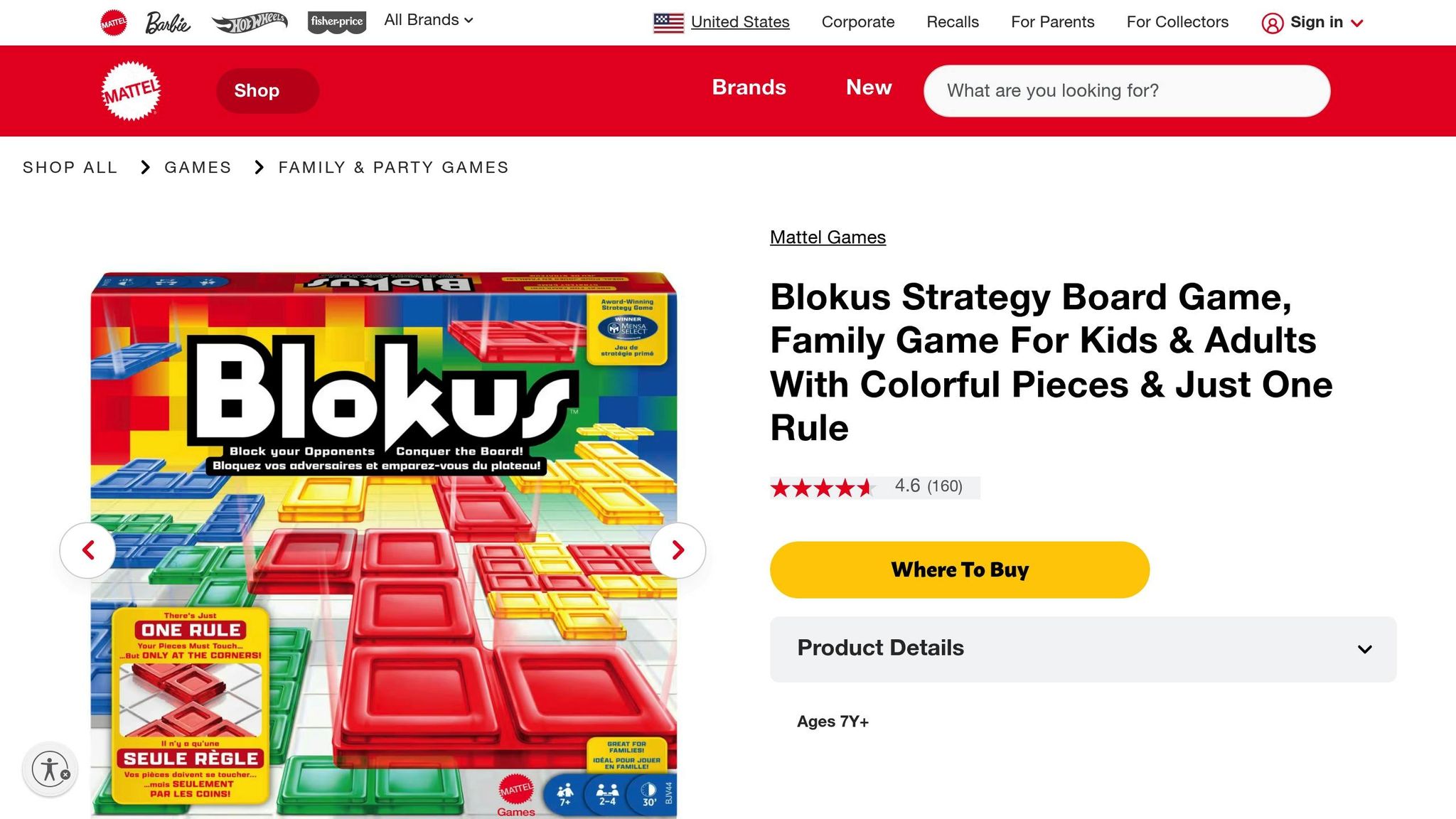
Blokus is a fantastic way to develop critical thinking through spatial reasoning and strategic planning. It combines simple rules with a surprising level of depth. Players place Tetris-like pieces on a board, aiming to outmaneuver their opponents while expanding their own territory. This mix of straightforward gameplay and strategic complexity makes it a standout choice for sharpening the mind.
Similar to games like Catan Junior, Blokus emphasizes spatial and strategic reasoning. It's especially beneficial for preteens, as strong spatial reasoning skills are often linked to success in STEM fields later in life. Educational expert Kent Haines highlights this, saying:
"Blokus is a fantastic game to help kids develop their spatial reasoning. In layman's terms, spatial reasoning is how people make sense of objects, their shapes, and how they relate to each other."
The game challenges players with three core strategic elements:
- Territory Control: Players must expand their area on the board while blocking their opponents.
- Resource Management: Planning ahead is key, as players need to use their differently sized pieces effectively.
- Spatial Planning: The game requires mental rotation and visualization to find the best placements for pieces.
Encouraging players to talk through their strategies can help them better understand spatial relationships and improve their critical thinking skills.
Advanced Tips for Winning
- Early Game: Focus on quickly securing the board's center using large pieces.
- Mid Game: Strike a balance between connecting your pieces and blocking your opponents.
- End Game: Save smaller pieces for filling tight spaces when options become limited.
Blokus has received accolades from respected organizations, including a Mensa award for promoting brain activity. ToriAnn Perkey praises the game, saying:
"I love how it is great for spatial learning, for problem solving. I love how it works for visual learners and you can play with all ages."
For a twist, parents and educators can try cooperative versions of the game where players work together to solve spatial puzzles. This approach not only builds critical thinking but also fosters teamwork and communication.
Blokus is easy to pick up, with just one main rule: each piece must touch another of the same color only at the corners. This simplicity makes it accessible while still offering a rewarding mental challenge.
3. Pandemic: The Cure

Pandemic: The Cure is a cooperative, dice-based game designed to sharpen preteens' decision-making skills by tasking them with stopping disease outbreaks. This team-oriented game combines engaging gameplay with strategic challenges, making it both fun and thought-provoking.
Cooperative Gameplay and Problem-Solving
In this game, players work together to coordinate actions, assess risks, and make team-based decisions. Each player takes on the role of a character with unique abilities and their own set of dice, requiring careful problem-solving and collaboration to succeed.
Game Mechanics That Build Critical Thinking
The core gameplay mechanics encourage players to think critically and make calculated decisions:
- Risk Assessment: Players must decide whether to re-roll dice, knowing it could lead to triggering epidemics.
- Resource Management: Balancing the treatment of diseases with collecting samples and sharing knowledge is key.
- Strategic Planning: Using character abilities effectively to handle evolving challenges tests teamwork and foresight.
Dale Yu, Editor of Opinionated Gamers, captures the intensity of the game:
"Pandemic: The Cure keeps the same story from the original game as well as the same palpable excitement/stress that made the original version so compelling."
Learning Through Play
The game’s quick setup (under one minute), 30-minute play sessions, and adjustable difficulty make it suitable for a range of skill levels.
Patrick Brennan from Opinionated Gamers adds:
"It's a really nice dice version of Pandemic, providing familiarity in theme and objective, as well as new touches to provide interest."
Recognition and Accolades
Pandemic: The Cure has earned multiple nominations, including Golden Geek Board Game of the Year, Best Thematic Board Game, Best Family Board Game, and Board Game Quest Awards Best Coop Game (2014).
With a BoardGameGeek rating of 7.2/10 and a complexity score of 2.06/5, the game strikes a balance between being approachable and challenging. Its tension-filled gameplay keeps players on edge, as a single dice roll can often determine the outcome.
4. Qwirkle
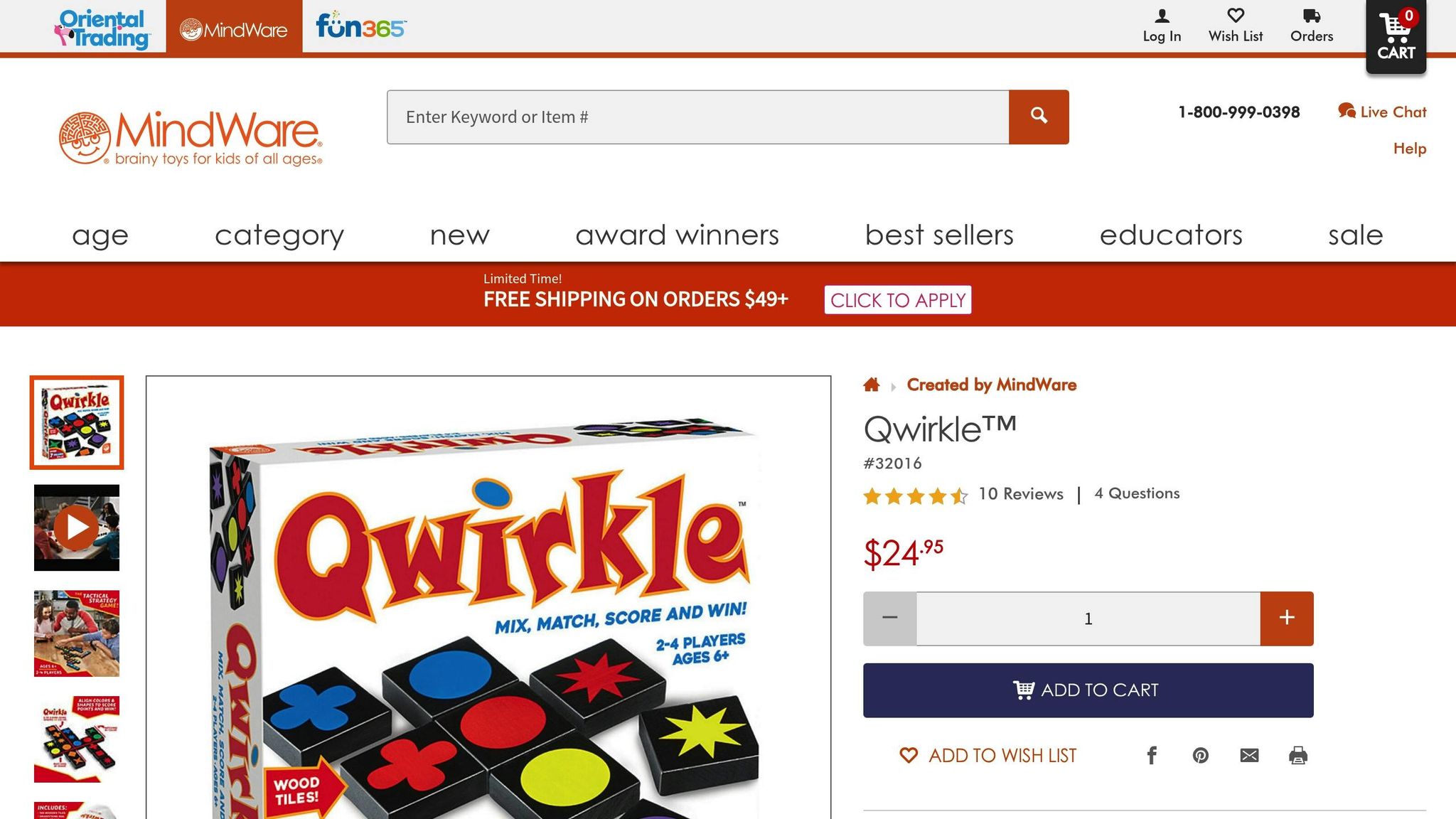
Qwirkle, created by MindWare and winner of the 2011 Spiel des Jahres award, combines pattern recognition with strategic decision-making in a tile-laying game designed for preteens. It encourages critical thinking through its engaging and balanced gameplay.
Game Components and Mechanics
Qwirkle includes 108 wooden tiles, each featuring one of six shapes in one of six colors. Players score points by creating lines of tiles that match either color or shape, with extra points awarded for completing a "Qwirkle" - a line of six tiles. This setup naturally encourages players to plan their moves and anticipate their opponents' strategies.
How Qwirkle Encourages Strategic Thinking
Qwirkle strengthens skills like pattern recognition, planning, and tactical decision-making through its straightforward yet thoughtful mechanics. As Jim Gamer puts it:
"Qwirkle is an absolute modern classic...this game feels like it could have been around for hundreds of years, both in its timeless design and its well-oiled mechanics."
Players must think several moves ahead, balancing their strategy between maximizing their own points and blocking their opponents.
Tips for Advanced Play
Experienced players can take their skills to the next level by:
- Setting up moves that score in multiple ways
- Watching opponents closely to block critical plays
- Timing line completions to maximize bonus points
Educational Benefits
Qwirkle's mix of strategy and simplicity makes it a great tool for building cognitive skills. According to Family Gamers, the game strikes a perfect balance between appealing visuals and engaging gameplay.
MindWare describes it best:
"Qwirkle™ is a must-have for your next family game night...a simple game of matching colors and shapes that requires tactical maneuvers, quick-thinking and a well-planned strategy."
Its accessibility ensures younger players can quickly learn the basics, while its depth keeps seasoned players challenged, making it a versatile choice for fostering critical thinking across different age groups.
sbb-itb-1ed942f
5. Ticket to Ride: First Journey
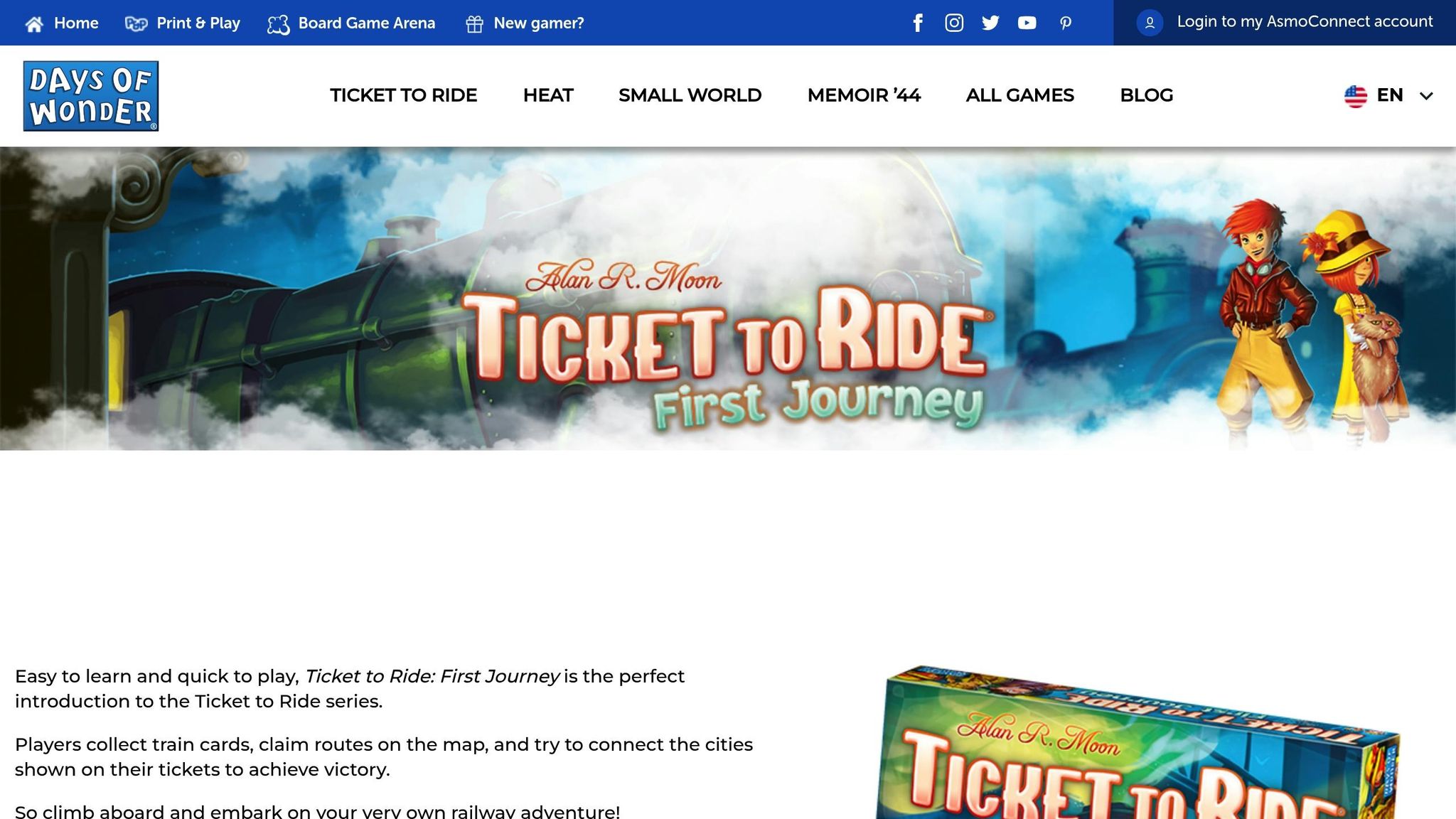
Ticket to Ride: First Journey blends geography with route-planning into a fun and engaging board game for preteens. This version simplifies the original Ticket to Ride, making it easier for younger players while keeping the core route-building challenge intact.
Game Overview
The game features a simplified board showcasing major cities connected by colorful train routes. Players gather train cards to claim routes between cities and work toward completing destination tickets. The straightforward mechanics encourage logical thinking and planning.
Strategic Elements
This game helps players develop important skills, such as:
- Route Planning: Finding the best paths between cities requires careful analysis of the board.
- Resource Management: Deciding how to use train cards effectively calls for smart choices.
- Flexibility: Drawing and discarding tickets teaches players how to adjust their plans on the fly.
These elements make gameplay both entertaining and educational.
Educational Value
First Journey is great for teaching geography while sharpening problem-solving abilities. Sean J. from The Daily Worker Placement highlights:
"Ticket to Ride First Journey keeps all of the familiar elements of the original game, but shortens the playtime to 15–30 minutes, ideal for maintaining focus."
By connecting cities, players learn geography in a hands-on way that goes beyond memorization. The shorter playtime ensures kids stay engaged while reinforcing what they’ve learned.
Game Mechanics
Several features make this version ideal for younger players:
| Feature | Benefit |
|---|---|
| 20-train limit | Keeps games quick and exciting |
| Six-ticket victory condition | Offers clear and simple goals |
| Simplified route claiming | Makes gameplay easier without losing depth |
| Coast-to-coast bonus | Encourages players to think on a larger scale geographically |
These adjustments make the game approachable while still challenging enough to hold interest.
Teaching Tips
To get the most out of the game, encourage players to:
- Take time to study the map before choosing routes.
- Plan their train card collection carefully.
- Explore multiple path options to reach their goals.
- Use repetition to help remember city locations.
With a quick 15-30 minute playtime, the game is perfect for multiple rounds. This allows kids to try different strategies while improving their critical thinking and geographic knowledge.
6. Forbidden Island
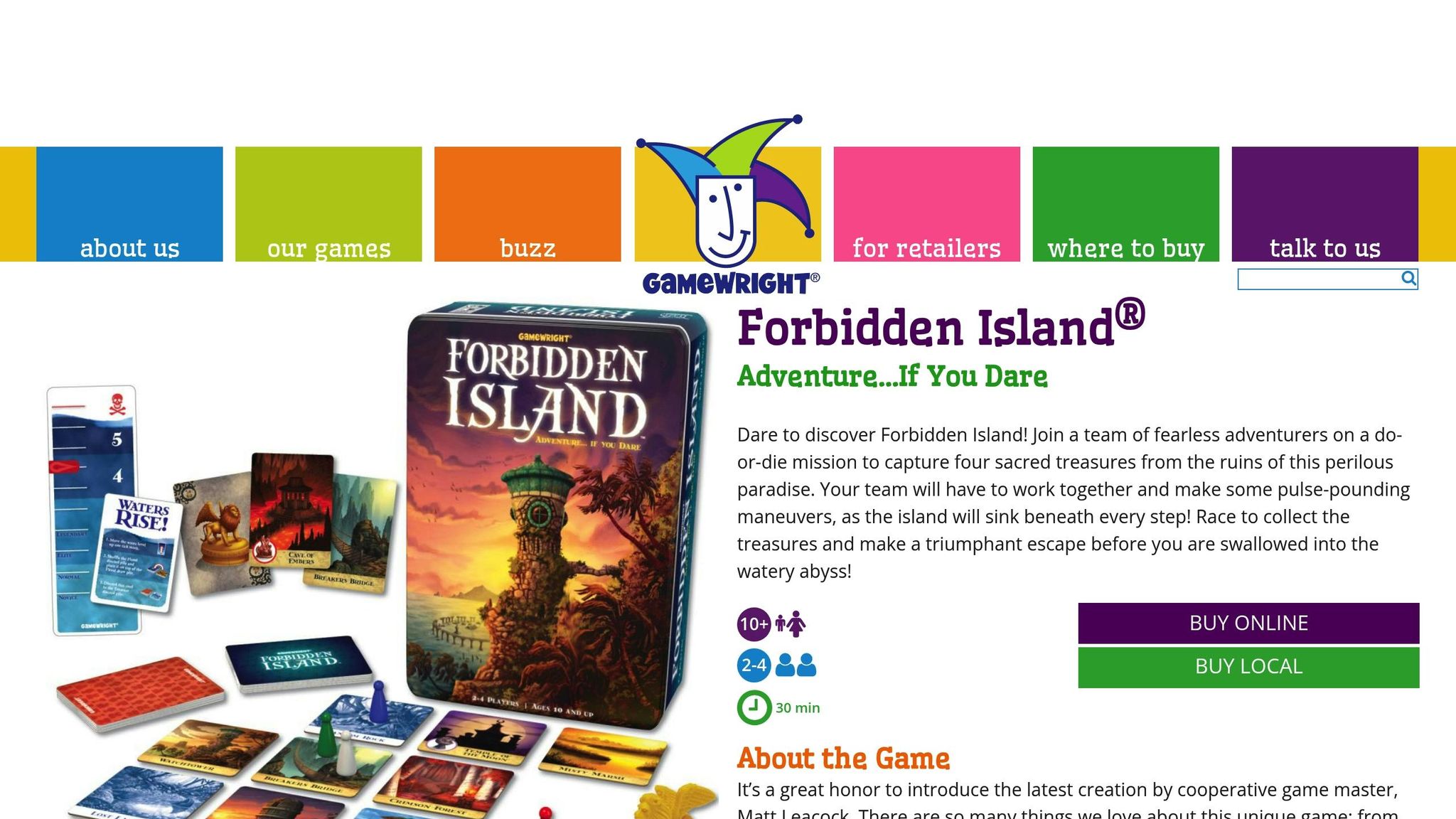
Forbidden Island is a cooperative board game designed to challenge preteens to think critically while working together. It earned the Mensa Select Seal in 2010, making it a popular choice for fostering teamwork and problem-solving. Players must collaborate to collect treasures and escape before the island sinks.
The game is set on 24 island tiles, where players work together to capture four treasures and flee before the island is submerged. Each player has a limited number of actions per turn to move across tiles, stabilize sinking areas, trade cards, or secure treasures.
Strategic Elements
Forbidden Island encourages players to develop critical thinking skills through its gameplay. Here's how:
| Skill | Role in the Game | Development |
|---|---|---|
| Resource Management | Limited actions per turn | Teaches prioritization and efficiency |
| Risk Assessment | Managing sinking tiles | Strengthens analytical thinking |
| Team Coordination | Using character abilities strategically | Improves communication |
| Planning Ahead | Balancing treasure collection with island stability | Builds long-term planning skills |
Educational Value
This game stands out for its ability to teach problem-solving through collaboration. WIRED highlights the benefits of cooperative games:
"What's great about cooperative games is learning to work with your teammates and figuring out how to use your strengths together"
With a playtime of about 30 minutes, it keeps players engaged while providing opportunities to refine strategies over multiple rounds.
Game Mechanics
Forbidden Island's mechanics naturally build tension and encourage critical thinking. Players must avoid several potential loss scenarios, such as:
- Players becoming stranded on sinking tiles.
- Losing treasures to submerged tiles.
- The helicopter evacuation point sinking.
- The water level reaching its maximum.
Difficulty Levels
The game offers adjustable difficulty settings, making it suitable for a wide range of skill levels. Its success is evident in the numerous awards it has received, including:
- Golden Geek Best Children's Board Game (2010)
- UK Game Expo Best Family/Children's Game (2011)
- Spiel des Jahres nomination (2011)
These accolades highlight its ability to promote teamwork and strategic thinking.
Teaching Tips
To get the most out of Forbidden Island, try these approaches:
- Start Simple: Begin with the easiest difficulty to teach the basics.
- Encourage Discussion: Use group strategy sessions to enhance teamwork.
- Rotate Roles: Let players experiment with different characters to understand diverse abilities.
- Review Outcomes: Analyze both successes and failures to improve future strategies.
7. Kingdomino
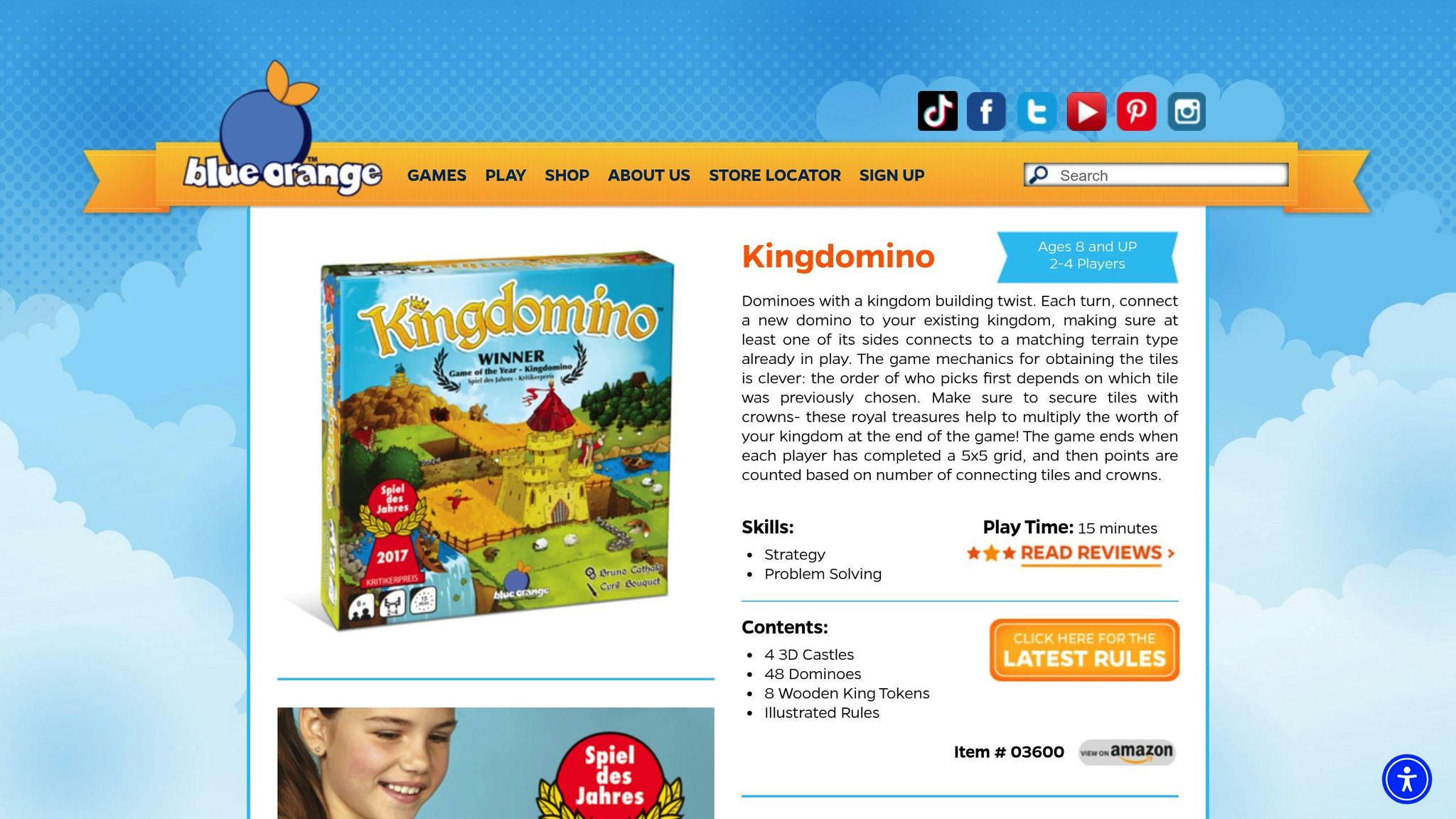
Kingdomino is a fantastic choice for preteens, offering a mix of spatial and mathematical challenges that promote critical thinking. This award-winning game - recognized with the 2017 Spiel des Jahres award - combines simple rules with engaging gameplay, making it both fun and educational.
Game Mechanics and Learning
In Kingdomino, players build their kingdoms on a 5×5 grid, making decisions that enhance key cognitive skills. Here's how the game connects its mechanics to learning:
| Skill | Game Element | Learning Benefit |
|---|---|---|
| Spatial Reasoning | Territory Planning | Figuring out how to fit dominoes within a limited space effectively. |
| Mathematical Thinking | Scoring System | Multiplying territory size by crowns to calculate scores. |
| Strategic Planning | Turn Order Selection | Balancing immediate rewards with long-term advantages. |
| Tile Matching | Matching Terrains | Expanding the kingdom by connecting matching terrain types. |
Strategic Elements
Kingdomino's depth comes from its layered decision-making. Players must carefully choose tiles, plan their kingdom's layout, calculate scoring opportunities, and even block opponents when necessary. Each turn requires balancing short-term benefits with long-term strategy, which is a great way to develop critical thinking.
As Board Game Arena puts it:
"Kingdomino rewards people for focusing on a few sets of tiles with multiple crowns, as opposed to multiple sets of tiles with few crowns, so aim to stock up!"
Educational Value
The Family Gamers gave Kingdomino glowing reviews for its educational benefits, rating it 9.5/10 overall, 9.5/10 for game mechanics, 9/10 for family fun, and 10/10 for artistic design. These scores highlight how well the game balances fun with learning opportunities.
Teaching Tips
To maximize the learning experience, you can encourage preteens to:
- Calculate scores after each turn to practice multiplication.
- Analyze placement options and weigh potential risks and rewards.
- Adjust their strategies as the game progresses.
With its quick 15–20 minute playtime, Kingdomino allows for repeated plays, helping players refine their strategies over time. Anitra Smith sums up its appeal perfectly:
"Overall, the simplicity of gameplay, the multi-layered strategy, and the beautiful components make this a game that the whole family can enjoy. No reading is required and the math is straightforward, which helps Kingdomino transcend age and language barriers presented by many other games."
8. Labyrinth
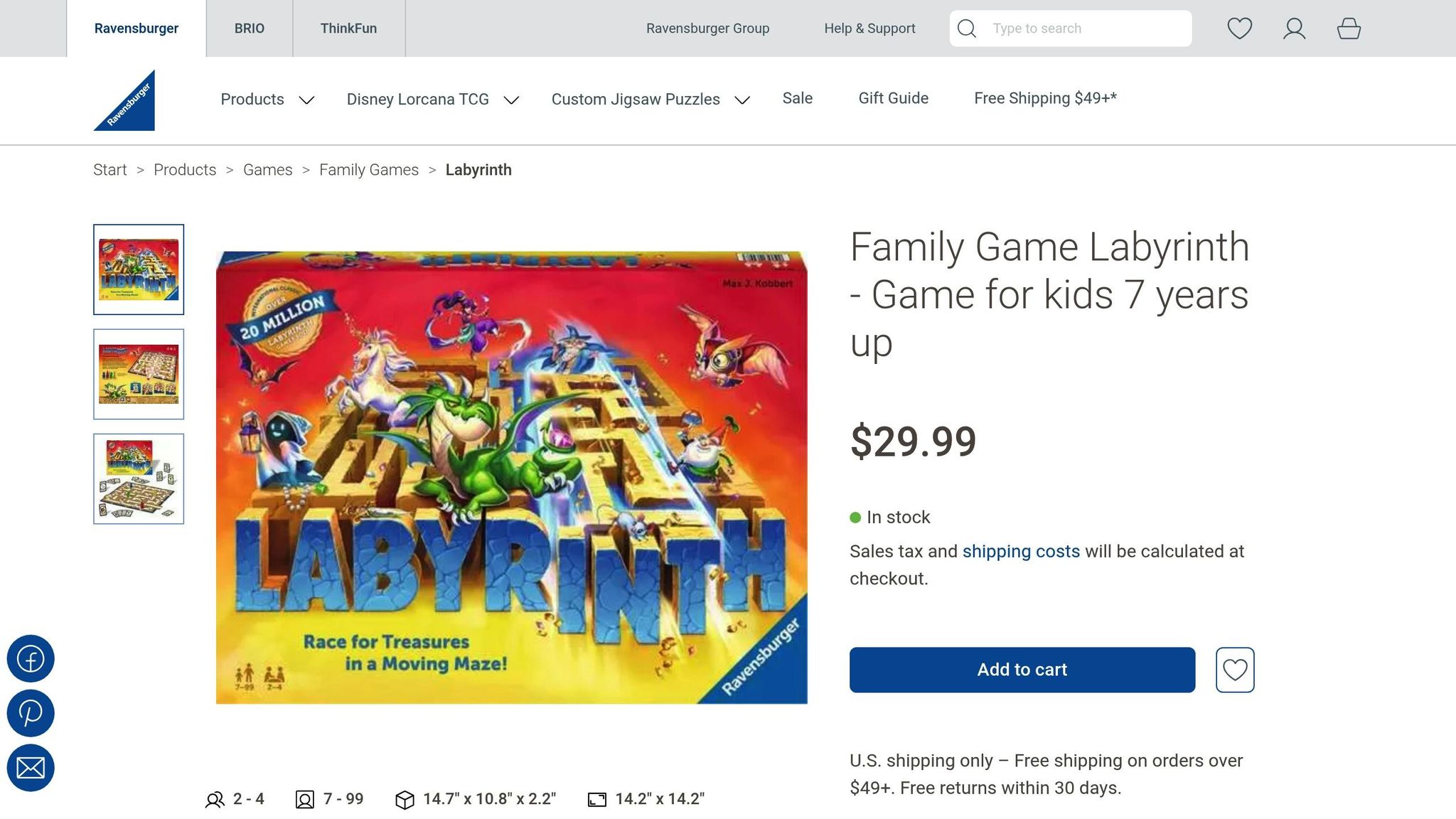
Labyrinth is a maze-building game designed for 2-4 players, ideal for preteens. It encourages spatial reasoning and strategic thinking while keeping gameplay engaging and dynamic.
Game Mechanics and Learning Benefits
At its core, Labyrinth revolves around a shifting maze where players navigate to collect treasures. Here's how its mechanics help boost cognitive skills:
| Skill | Game Element | Learning Benefit |
|---|---|---|
| Spatial Reasoning | Maze Navigation | Improves understanding of spatial relationships and pathfinding |
| Strategic Planning | Board Manipulation | Develops the ability to predict and plan board changes |
| Problem-Solving | Path Creation | Encourages finding alternative routes when blocked |
| Adaptability | Random Setup | Teaches players to adjust strategies to new configurations |
This mix of challenges tests players immediately while laying the groundwork for more complex strategies over time.
Educational Impact
Studies back up Labyrinth's educational value. For example, research shows that 8th graders who spent 20 hours on spatial reasoning tasks saw measurable improvements in math performance.
Strategic Depth
Labyrinth demands both short-term and long-term planning:
- Short-term Moves: Players must think about how their current action shapes the maze and creates paths.
- Long-term Strategy: Understanding how tile placements influence future moves and opponents' options is key.
Educational expert Kent Haines notes:
"Labyrinth is a fantastic game to explore my favorite domain of math: Spatial reasoning and visualization!"
Teaching Tips
To maximize learning opportunities with Labyrinth, try these approaches:
- Begin with face-up or cooperative play for beginners.
- Ask guiding questions like, "What’s the quickest route?" or "What’s blocking your way?".
- Use practice rounds to help players experiment with sliding maze tiles.
Advanced Play
With four players, the maze shifts more often, adding extra layers of complexity. Players can also adopt offensive tactics, such as predicting and blocking opponents' paths. The random maze setup keeps gameplay fresh, presenting new challenges every time. These advanced strategies not only make the game more exciting but also mirror real-world problem-solving and adaptability.
9. Clue: Junior
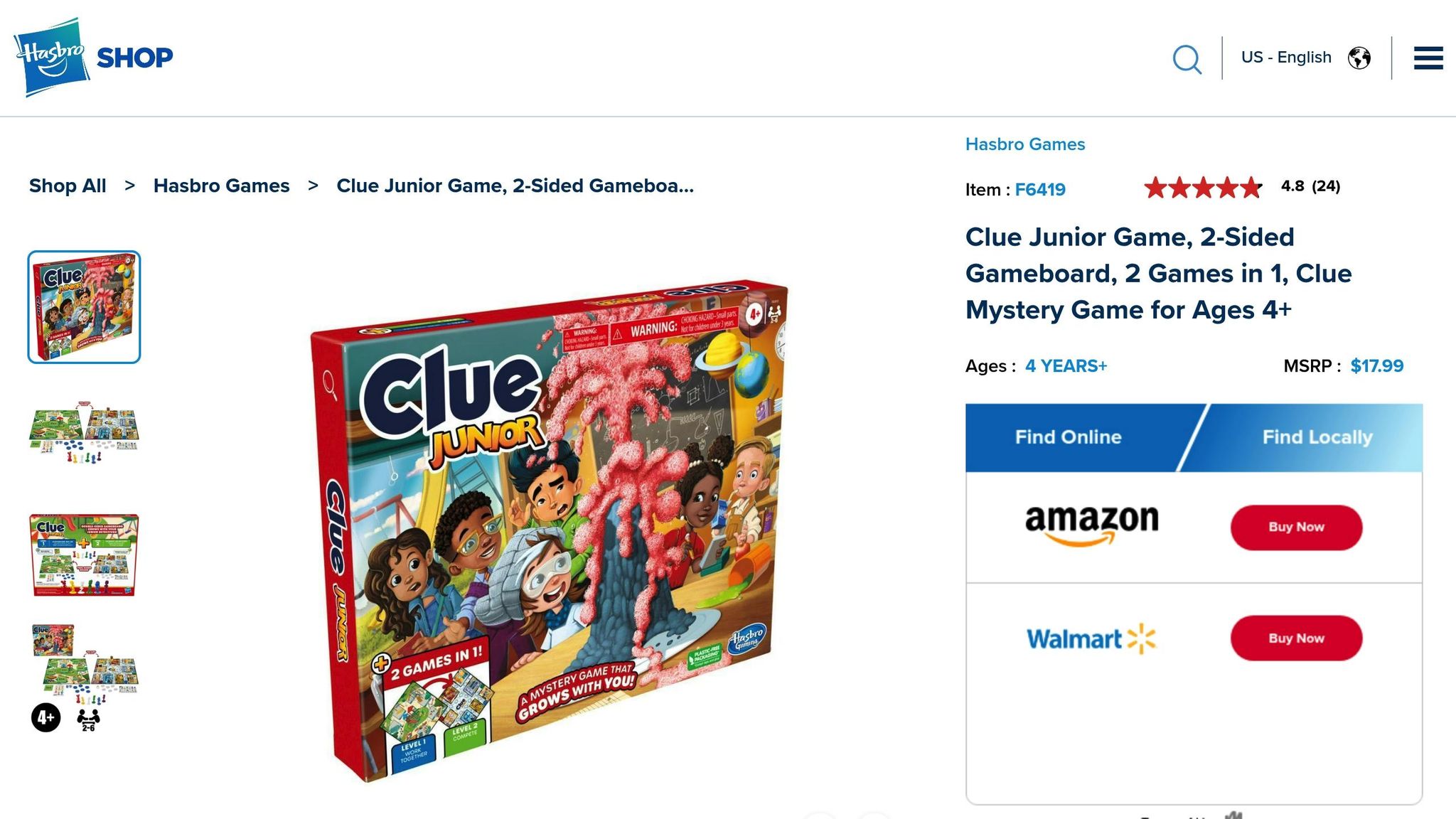
Clue: Junior brings the classic mystery game to preteens, offering kid-friendly mysteries like figuring out who took the last piece of cake or where a missing toy might be.
Game Mechanics and How It Helps Kids Learn
Clue: Junior uses gameplay to strengthen deductive reasoning. Players track clues on a detective notepad, gradually narrowing down possibilities until they solve the mystery. This process helps kids build essential cognitive skills:
| Skill | Game Feature | How It Helps |
|---|---|---|
| Deductive Reasoning | Eliminating Clues | Teaches kids to draw logical conclusions from clues |
| Analytical Thinking | Processing Information | Encourages systematic evaluation of evidence |
| Strategic Planning | Deciding Next Moves | Promotes thoughtful decisions about which clues to follow |
These mechanics make learning feel natural and fun.
Why It’s Great for Learning
With its simplified gameplay, Clue: Junior is perfect for helping kids develop critical thinking. Sessions last about 30-60 minutes, providing just the right mix of challenge and engagement. Through detective-style play, kids practice:
- Breaking down information step by step
- Drawing logical conclusions from evidence
- Testing ideas during gameplay
- Considering different possibilities before deciding
This aligns with the goal of using games to improve critical thinking in preteens.
Tips for Teaching Through Play
Adding a little guidance can make the game even more impactful.
- Team Play: Pairing adults and kids as teams can enrich the experience. Adults can demonstrate problem-solving techniques while keeping kids actively involved.
-
Skill Building: Regular play helps kids get better at:
- Managing multiple pieces of information
- Making logical connections
- Thinking ahead strategically
- Looking at problems from different angles
Ready for More?
As kids master the basics, they can start using more advanced deduction strategies. The game’s design naturally supports this progression.
Clue: Junior is one of the educational board games highlighted by Brain Games, combining learning with fun in a way that keeps kids engaged.
10. Santorini
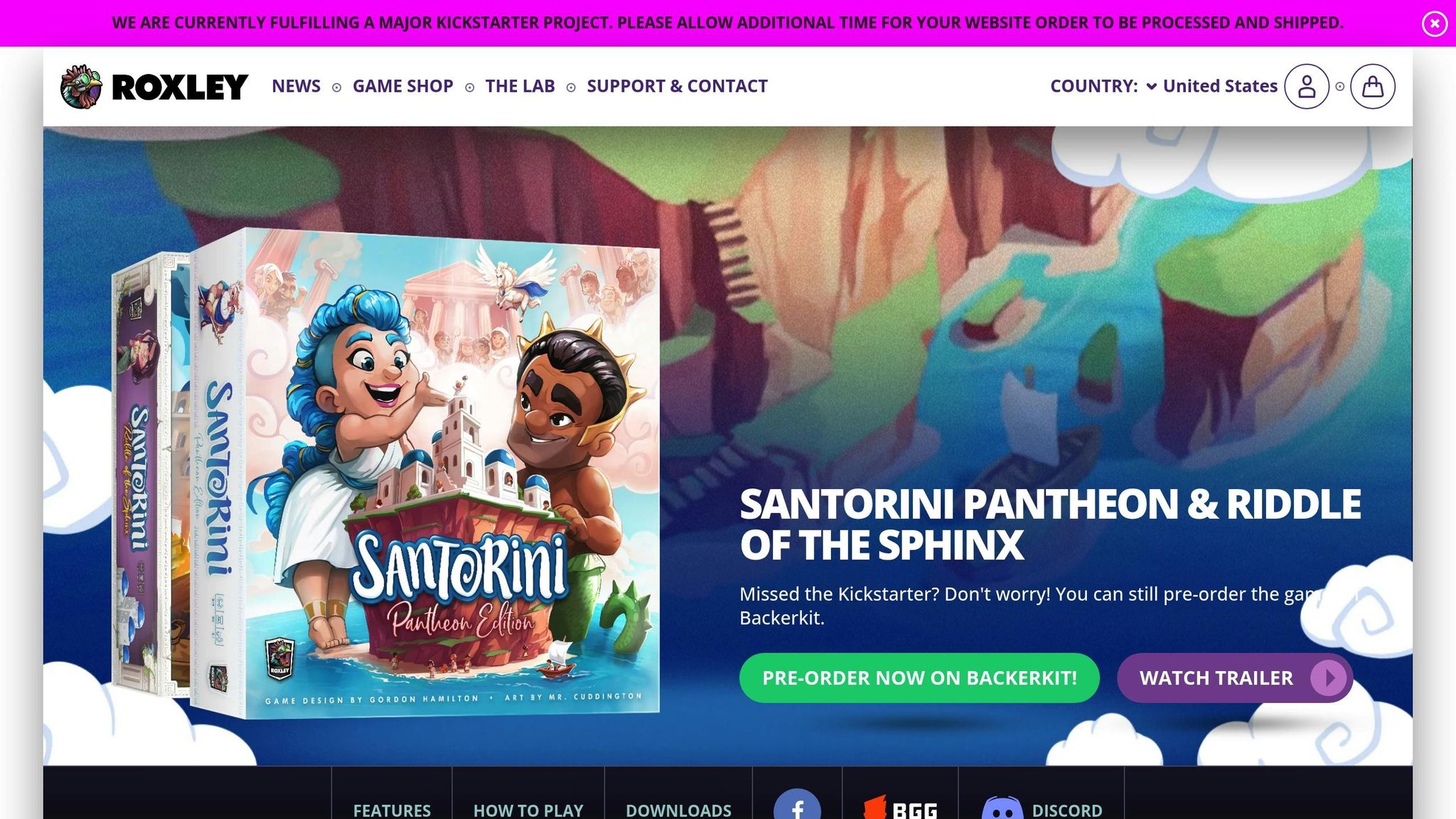
Santorini blends 3D gameplay with strategy, making it a fun way for preteens to sharpen critical thinking. This abstract strategy game, ranked among the top 100 board games of all time, helps kids improve spatial reasoning and tactical planning.
Game Mechanics and Learning Benefits
The gameplay is straightforward: players move a builder and construct buildings step by step. Its simplicity allows kids to focus on strategy without being bogged down by complicated rules. Here's what players can learn:
| Skill | Game Element | What Kids Learn |
|---|---|---|
| Spatial Reasoning | 3D Building | Players learn to visualize and plan moves across multiple levels. |
| Forward Planning | Move Anticipation | Kids practice predicting their opponent's actions and planning ahead. |
| Strategic Thinking | Resource Management | Each turn, players must balance building and movement options. |
| Tactical Decision-Making | Win Conditions | Players decide whether to advance their own goals or block their opponent's. |
Why Preteens Love It
Santorini’s clear mechanics and short, 20-minute playtime keep young players engaged while offering plenty of opportunities to think strategically. The defined win conditions and variety of strategies make every game feel fresh.
Adding Complexity with God Powers
For players who want more of a challenge, Santorini includes God Powers cards. These add unique abilities that introduce new strategies while keeping the core gameplay intact. Beginners can start with 10 starter God cards, gradually trying more complex ones as they improve.
Tips for Teaching the Game
- Begin with the basic rules and add God Powers later.
- Encourage players to explain their thought process.
- Practice visualizing moves before making them.
- Discuss alternative strategies after the game ends.
Brain Games (https://brain-games.com) highlights Santorini as a top choice for building spatial reasoning and strategic thinking in kids. Its mix of simple mechanics and deeper challenges makes it a great tool for teaching problem-solving through play.
Making Games Work for Learning
Board games can be more than just entertainment - they can also be powerful learning tools. By balancing fun with educational elements, structured play can significantly enhance learning outcomes.
Setting the Stage for Success
To make the most of game-based learning, preparation is key:
- Setup Time: Dedicate specific sessions for gaming to keep players focused.
- Game Rules: Go over the rules together beforehand to avoid confusion during play.
- Behavior: Set clear expectations for sportsmanship to encourage a positive experience.
- Clean-up: Assign tasks to promote organization and teamwork after the game.
Encouraging Critical Thinking Through Conversation
Bruce Brown, Founder of the Tabletop Alliance, emphasizes the value of intentional dialogue:
"The research shows that this is especially true when educators use intentional dialogue and reflection on actions to reinforce the learning for future applications".
By reflecting on their actions during the game, players can sharpen their problem-solving skills and apply them to real-world scenarios.
Building Problem-Solving Skills
Rurik Nackerud, President at VIVED Learning, highlights the importance of reflection:
"When players reflect on their decisions, they can identify what worked well and what could have been improved. This process helps them to learn from their mistakes and improve their problem-solving skills over time. Set aside time at the end to ask the kids you play with what they would do differently.".
Encourage players to break down challenges into smaller steps, record mistakes to refine their strategies, and explore alternatives through open-ended questions.
Supporting Curriculum Topics
Games don’t just develop cognitive skills - they can also support academic learning. Teacher Alyssa Tong notes:
"The sky is the limit in how you can use games to support curriculum".
Here’s how games can tie into various subjects:
- Mathematics: Practice number recognition and basic operations.
- Language Arts: Build vocabulary and improve communication skills.
- Social Studies: Explore resource management and decision-making.
- Logic: Develop strategic planning abilities.
Monitoring Growth
Track progress to see how players are improving by:
- Observing how their strategies evolve over time.
- Using discussions to assess understanding.
- Noting the complexity of their decisions.
- Measuring how quickly they solve problems.
As skills improve, integrate these lessons into casual play to encourage natural growth.
Keeping Learning Fun
The key is to maintain the joy of playing while weaving in learning opportunities. Games naturally challenge memory, attention, strategy, and reasoning. Allow preteens to explore and discover strategies on their own, stepping in only when they need guidance.
Brain Games offers board games that increase in difficulty, helping preteens gradually build their skills while staying engaged.
Wrap-Up
Board games offer a great way for preteens to sharpen their critical thinking skills while having fun. Studies reveal that regular gameplay activates brain areas tied to memory and complex thinking.
To make the most of these benefits, consider starting a family game night. As Jessica Solis puts it:
"Family game time doesn't need much to make it memorable and fun, it just requires spending time together."
This simple practice keeps play enjoyable while reinforcing valuable skills.
Through board games, players develop abilities like strategic planning, problem-solving, memory, focus, social interaction, and emotional control. Learning the rules and engaging with other players helps build these skills. For the best results, begin with straightforward games and gradually introduce more challenging ones.
You can easily make board games part of your routine. Schedule regular sessions, pick games that tie into school subjects, and encourage solo play to promote independent learning. With consistent effort and thoughtful planning, board games can become a key tool in boosting your preteen's critical thinking and strategy skills.






